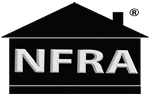Over time, every home undergoes some settling, particularly noticeable in the initial 30 years after construction. Occasional creaking is usually normal and not a cause for concern.
However, when settling becomes consistently loud or constant, especially after many years, it may indicate serious foundation problems. The foundation is arguably the most crucial part of the entire structure, impacting walls, roof, windows, doors, and more. A damaged foundation can compromise the safety of a home, leading to potential issues with insurance coverage and difficulty securing a mortgage for the property. In severe cases, the damage may render the property essentially useless.
Signs of foundational damage include diagonal cracks in walls, a leaning or tilting chimney, warped doors and windows, cracks in drywall or concrete flooring, and “stair-step” crack patterns in foundation walls.
To prevent severe foundation issues, steps can be taken to retain the soil around the foundation. Maintaining the soil helps ensure proper water drainage, preventing erosion that can lead to cracks and structural damage over time. These cracks may start small but can grow significantly, impacting the foundation’s ability to bear weight properly. Early prevention is crucial.
1. Enhance Your Drainage with Proper Landscaping
Grading enables gravity to assist in directing water away from the base of your home. The ground should have a slope moving away from the foundation for several feet, ideally at least one inch per foot. It is essential to confirm the proper grade before proceeding with additional steps. Planting shrubs and flowers around the home is a cost-effective method to safeguard the foundation. The vegetation serves as a protective barrier against wind and rain erosion for the top layers of soil. Simultaneously, the root system reinforces and supports the soil deeper in the ground.
2. Add Retaining Walls
Retaining walls prove to be the most effective method for safeguarding foundation soil in the majority of homes. Due to their ability to distinctly delineate various elevation points, they are particularly valuable in preventing soil erosion on sloped terrain. Additionally, these walls can redirect water away from the foundation. Typically, the bottom of a retaining wall is the thickest. Introducing targeted drainage on the wall can safeguard the elevated section and enhance water diversion. While an anchored wall with support beams offers the highest strength, alternative options may be considered based on the specific layout of your land.
3. Ensure Proper Gutter Maintenance
While this step is more associated with your roof than your landscaping, its importance is surprisingly significant. Many homeowners overlook the connection between a home’s roof and its foundation. One of the most vital tasks you should tackle each season is clearing leaves and other debris from your gutters. If your gutters are leaking or bent, replacing them promptly is crucial. While gutters primarily shield your roof from leaks, they also play a vital role in protecting your foundation. They facilitate the proper drainage of rainwater away from the foundation soil, adhering to the natural slope of the land. When gutters malfunction, there is a higher likelihood of water seeping directly into the base of the building.
4. Improve the Soil Beneath Your Foundation
The soil beneath your foundation might hide structural problems. Inadequately compacted fill soil and soil rich in clay are more prone to causing foundation issues than denser soils. Thinner soil facilitates the transfer of movement to the foundation. The aim for the soil beneath the foundation is uniform swelling, minimizing the difference between its parts. Soil expansion and contraction are most noticeable during intense rainfall. Although soil replacement is usually impractical, a push pier can fortify the foundation. It involves driving a section of robust steel tubing through unstable soil into the stable ground below.
Schedule Your Free Estimate Today!
AAA Foundation Service
When seeking methods to avoid the sinking of your Houston home’s foundation, you might want to consult an expert for a comprehensive analysis if you are concerned that damage has occurred. This service is provided at no cost to you, and the peace of mind gained is certainly worthwhile! Contact Us Today for your Free Estimate!

Get Your Professional Foundation Repair Today!
Call: 713-467-8981



0% Financing for 18 Months
